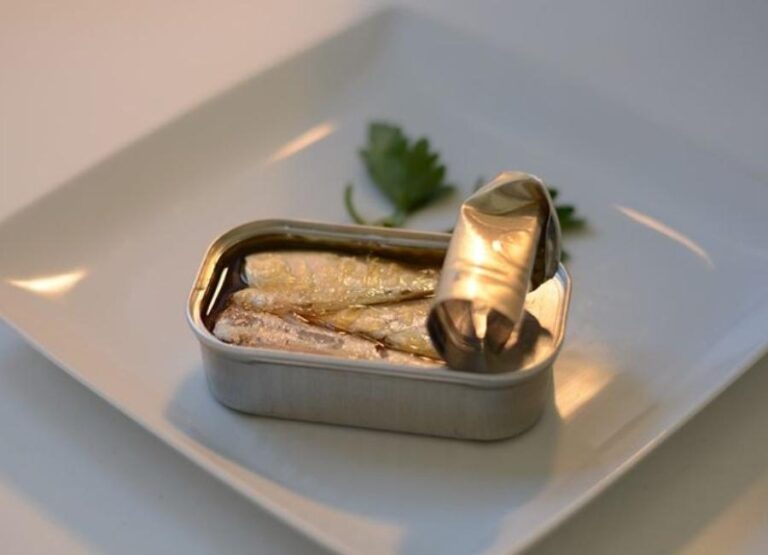Can Pregnant Women Eat Crab Legs [Answered]
Pregnancy is a time of excitement and transformation, with many women exploring new foods and adjusting their diets to support the growth of their little ones.
But what about seafood? Specifically, can pregnant women eat crab legs?
This tasty dish is a favorite for many, but some worry that consuming it during pregnancy may be harmful.
Let’s take a closer look at the facts and find out if crab legs are a safe and delicious addition to your pregnancy diet.
Can Pregnant Women Eat Crab Legs
Yes, it is generally safe for pregnant women to eat crab legs as long as they are fully cooked and prepared properly.
Crab legs are a good source of protein and omega-3 fatty acids, which are beneficial for both the mother and the baby
However, pregnant women should avoid raw or undercooked seafood, including crab, as it may contain harmful bacteria and parasites that can cause foodborne illnesses
Additionally, it is recommended that pregnant women do not consume more than 12 ounces of seafood per week to avoid exposure to high levels of mercury.
As always, it’s a good idea to consult with your healthcare provider if you have any concerns or questions about your diet during pregnancy.
How to prepare crab legs for pregnant women
Crab legs may be prepared the same way for pregnant people as for everyone else.
However, pregnant women should take precautions to make sure that any seafood they consume is secure and that the crab legs are prepared correctly.
Here are some steps for preparing crab legs for pregnant women:
- Choose a reputed seafood market or grocery store when buying crab legs: These establishments are known for offering fresh seafood and should be considered when buying crab legs. Make sure the crab legs appear and smell fresh, and check the date of expiration.
- Thaw the crab legs: Crab legs may be defrosted in the refrigerator or by soaking them in cold water. The crab legs should be put in a container and allowed to slowly defrost in the refrigerator overnight to thaw. Crab legs may be defrosted in cold water by putting them in a sealed plastic bag and submerging them in it. After 30 minutes, change the water and repeat the process. Crab legs shouldn’t be defrosted at room temperature for longer than two hours, since doing so increases the chance of bacterial development.
- Rinse the crab legs: After they have thawed, rinse the crab legs in cold running water to get rid of any dirt or debris.
- Boil the crab legs: To boil the crab legs, add enough water to a big saucepan to cover them completely. Bring the water to a boil while adding salt. Carefully add the crab legs to the pot after the water has reached a rolling boil. Make sure the water is still boiling while allowing the crab legs to simmer for four to five minutes.
- Remove the crab legs from the pot: After the crab legs have finished cooking, gently remove them from the saucepan using tongs or a slotted spoon. Put them on a serving tray or platter.
- Let the crab legs cool before serving: Let the crab legs cool for a few minutes. With melted butter or a custom dipping sauce, they can be served hot or cold.
Crab legs recipe for pregnant women
Here’s a crab legs recipe that is safe for pregnant women:
Ingredients:
1 pound crab legs
4 cups of water
1 lemon, sliced
2 cloves garlic, minced
1/2 teaspoon salt
1/4 teaspoon black pepper
1/4 teaspoon paprika
2 tablespoons butter, melted.
Instructions:
- In a large pot, bring water to a boil and add lemon slices, garlic, salt, black pepper, and paprika.
- Place the crab legs in the pot and cover with a lid.
- Simmer the crab legs in the pot over medium heat for about 5–7 minutes or until they turn pink and are cooked through.
- Once done, remove from the heat, drain the water and transfer the crab legs to a plate.
- Drizzle with melted butter and serve immediately.
Learn more about the benefits of eating seafood.
Alternative Seafood Options to Crab Legs for Pregnant Women
There are many healthy seafood options that pregnant women can choose instead of crab legs.
Some good choices include:
- Salmon: This fish is high in omega-3 fatty acids, which are important for fetal brain development.
- Shrimp: This seafood is low in calories and high in protein, making it a great option for pregnant women.
- Lobster: Lobster is another seafood option that is low in calories and high in protein.
- Clams: Clams are a good source of iron, which is essential for fetal development.
- Mussels: Mussels are also a good source of iron and provide other essential nutrients like vitamin B12 and selenium.
- Oysters: Oysters are a good source of zinc, which is important for fetal growth and development.
- Trout: Trout is another fish that is high in omega-3 fatty acids and is a good alternative to crab legs.
When selecting seafood, it’s important to choose fish and shellfish that are low in mercury.
Pregnant women should avoid high-mercury fish like sharks, swordfish, king mackerel, and tilefish.
It’s recommended that pregnant women eat 2–3 servings of fish per week to get the health benefits while avoiding the risks of consuming too much mercury.
Learn more about eating raw crab.
Health Benefits of Crab Legs for Pregnant Women
Here are some common health benefits of crab legs for pregnant women:
- Protein: Crab legs are high in protein, which is an essential nutrient that helps to build and repair tissues in the body, including the muscles, bones, and organs.
- Zinc: Crab legs are a good source of zinc, which is important for a healthy immune system, wound healing, and fetal growth and development.
- Folate: Crab legs contain folate, which is a B vitamin that plays a key role in the development of the neural tube and helps to prevent birth defects.
- Omega-3 fatty acids: Crab legs contain omega-3 fatty acids, which are important for fetal brain and eye development.
- Low in mercury: Crab legs are low in mercury, which is a toxic metal that can harm the developing fetus. As a result, eating crab legs can be a safer seafood option for pregnant women.
- Low in saturated fat: Crab legs are low in saturated fat, which is important for maintaining a healthy weight and reducing the risk of heart disease.
- Low in calories: Crab legs are relatively low in calories, which can be helpful for managing weight gain during pregnancy.
- Iron: Crab legs contain iron, which is essential for the production of red blood cells and can help to prevent anemia during pregnancy.
- Calcium: Crab legs contain calcium, which is important for fetal bone development and can help to prevent osteoporosis later in life.
Learn more about different safe seafood for pregnant women.
Risks Associated with Eating Crab Legs During Pregnancy
While crab is generally safe to eat during pregnancy if it is fully cooked, there are some risks associated with eating crab legs during pregnancy.
Here are some common risks to be aware of:
- Mercury content: Crab legs can contain mercury, which can harm the developing fetus.
- Food poisoning: Eating raw or undercooked crab legs can increase the risk of food poisoning, which can be dangerous for both the mother and the baby.
- Allergic reactions: Some people are allergic to shellfish, including crab legs, and this can cause serious reactions.
- High cholesterol: Crab legs are high in cholesterol, which can increase the risk of heart disease.
- Bacterial infections: Crab legs can harbor bacteria such as Vibrio, which can cause infections.
- Parasites: Crab legs can contain parasites such as tapeworms, which can be harmful to the developing fetus.
- Sodium content: Crab legs are high in sodium, which can increase blood pressure and lead to complications during pregnancy.
- Environmental contaminants: Crab legs can contain environmental contaminants such as polychlorinated biphenyls (PCBs), which can harm the developing fetus.
- Handling and preparation: Improper handling and preparation of crab legs can increase the risk of foodborne illness.
Learn more about seafood to avoid when pregnant.
Guidelines for Eating Crab Legs During Pregnancy
Crab legs can be a part of a healthy diet during pregnancy, but it is important to follow some guidelines to ensure safety.
The FDA recommends that pregnant women consume no more than 6 ounces of cooked crab per week.
Additionally, it is important to ensure that the crab legs are fully cooked before eating to reduce the risk of foodborne illness.
It is also important to consider the source of the crab legs.
Certain types of crab may contain high levels of mercury, which can be harmful to the developing fetus.
It is best to choose crab legs that are lower in mercury, such as king crab or snow crab.
As always, it is a good idea to consult with your healthcare provider about your specific dietary needs during pregnancy.
They can provide personalized recommendations and advice based on your individual circumstances.
Frequently Asked Questions
Is it safe for pregnant women to eat crab legs?
According to the American Pregnancy Association, crab legs can be a great source of protein for pregnant women, as long as they are cooked thoroughly and not consumed in excess.
Can eating crab legs during pregnancy harm the baby?
There isn’t any evidence to suggest that eating crab legs during pregnancy can harm the baby, as long as they are prepared properly and eaten in moderation.
Are there any risks associated with eating crab legs during pregnancy?
One risk associated with eating shellfish like crab legs is the potential for bacterial or viral contamination, which can cause food poisoning.
Pregnant women should avoid raw or undercooked crab legs and consume them in moderation to minimize these risks.
What are the benefits of eating crab legs during pregnancy?
Crab legs are a good source of protein, vitamins, and minerals, which can be important for fetal growth and development.
They also contain omega-3 fatty acids, which are beneficial for brain development.
Can pregnant women eat imitation crab meat instead of real crab legs?
Imitation crab meat is typically made from processed fish and contains added flavors and preservatives, so it isn’t the same as real crab legs.
Pregnant women can still consume imitation crab meat, but it’s important to read the label and make sure that it doesn’t contain any harmful additives.
How often can pregnant women eat crab legs?
Pregnant women can eat crab legs in moderation, as part of a well-balanced diet.
It’s recommended to limit the consumption of crab legs to 2–3 times per week to avoid the potential risks associated with consuming too much mercury, which can be harmful to the developing fetus.
Conclusion
In conclusion, pregnant women can safely enjoy crab legs as long as they are fully cooked and consumed in moderation.
So, if you’re a seafood lover and expecting, don’t worry, you can still indulge in this delicious treat!
Just remember to cook them thoroughly and enjoy them in moderation.
References



![How To Know Lobster Is Bad [Answered]](https://foodcreeks.com/wp-content/uploads/2023/01/How-To-Know-Lobster-Is-Bad-768x555.jpg)


![Is Frozen Tuna Safe To Eat Raw [Answered]](https://foodcreeks.com/wp-content/uploads/2023/02/Is-Frozen-Tuna-Safe-To-Eat-Raw-768x555.jpg)
